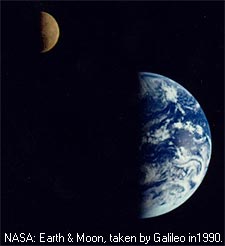Fan Micro Car DIY STEM Kit
$9.99$5.95
 The Moon is gradually receding from the Earth, at a rate of about 4 cm per year. This is caused by a transfer of Earth's rotational momentum to the Moon's orbital momentum as tidal friction slows the Earth's rotation. That increasing distance means a longer orbital period, or month, as well.
The Moon is gradually receding from the Earth, at a rate of about 4 cm per year. This is caused by a transfer of Earth's rotational momentum to the Moon's orbital momentum as tidal friction slows the Earth's rotation. That increasing distance means a longer orbital period, or month, as well.
 'A theory with mathematical beauty is more likely to be correct than an ugly one that fits some experimental data. God is a mathematician of a very high order, and He used very advanced mathematics in constructing the universe.'
'A theory with mathematical beauty is more likely to be correct than an ugly one that fits some experimental data. God is a mathematician of a very high order, and He used very advanced mathematics in constructing the universe.'